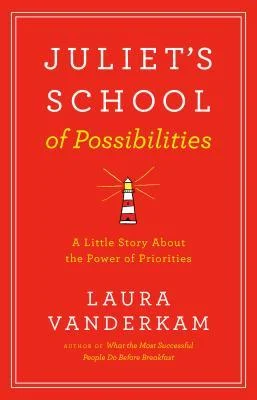In Laura Vanderkam's book, "Juliet's School of Possibilities," we follow the story of Riley, a young professional struggling to balance her work and personal life. The book imparts valuable lessons about the power of priorities and effective time management. Here are some key takeaways from this insightful book, along with examples from everyday life:
- The Importance of Priorities: The book emphasizes the significance of setting clear priorities. For example, by recognizing that spending quality time with family is a top priority, individuals can allocate their time and energy accordingly, leading to a more fulfilling and balanced life.
- The Power of Saying No: Riley learns that saying no to certain tasks or requests can be empowering. For instance, by declining opportunities that don't align with her career goals, she frees up time for the things that truly matter, such as working on meaningful projects or spending time with loved ones.
- The Myth of Multitasking: The book debunks the myth that multitasking is an effective way to manage time. Instead, Riley discovers that focusing on one task at a time, such as completing a work project without distractions, is a more efficient use of her time and energy.
- The Value of Self-Reflection: Throughout the story, Riley engages in self-reflection, which helps her identify her priorities and make better decisions. For example, by reflecting on her career and personal goals, she gains clarity and perspective, allowing her to make choices that align with her values.
- The Art of Delegation: Riley learns that she doesn't have to do everything herself. By delegating tasks to others, she frees up time to focus on her most important priorities, such as leading a team or working on high-impact projects.
- The Importance of Boundaries: Riley discovers that setting boundaries is crucial for maintaining a healthy work-life balance. For instance, by establishing clear boundaries around work hours and personal time, she is able to protect her energy for the things that matter most.
- The Power of Small Changes: The book demonstrates that small changes can have a big impact on our lives. For example, by making small adjustments to her daily routine, such as incorporating short breaks to recharge during the workday, Riley is able to create more time for her priorities.
- The Value of Self-Care: The book highlights the importance of self-care, reminding us that taking care of ourselves is necessary for maintaining our well-being and productivity. For instance, by prioritizing activities that promote physical and mental health, individuals can perform better in all areas of their lives.
In conclusion, "Juliet's School of Possibilities" offers valuable lessons about the power of priorities and time management. By applying these lessons to our own lives, we can create more time and energy for the things that truly matter, leading to a more fulfilling and balanced existence.
This book is a thought-provoking and engaging read that can help readers rethink their approach to time, priorities, and possibilities

